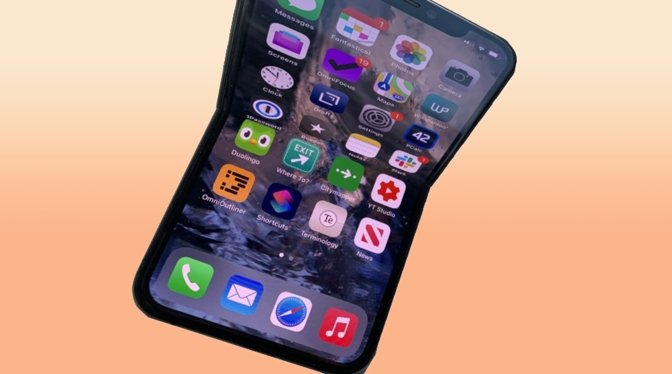The rumored iPhone Fold or iPad that uses a flexible display could use new technology to prevent the display from getting too brittle from cold weather by warming the screen before bending it, by using a combination of heating elements and even the pixels of the display itself.

The initial wave of foldable smartphones has suffered a number of problems relating to their flexibility. While this has prompted a design rethink from producers to fix initial issues, there are still more situations that need to be addressed to make the phone format more robust.
One such issue can be the effects of temperature on materials. While warm temperatures could allow plastics and other materials to be more flexible and malleable, colder temperatures have the opposite effect in making them less pliable.
For a device with a flexible display like a smartphone, this could be disastrous for the screen, as it may fatigue at a higher rate. This could result in a more rigid display prone to cracks, and eventually could lead to it breaking.
This may not just affect the main material of the screen, as adhesives and other intermediary elements could also be impacted by cold weather.
In the patent granted to Apple on Tuesday by the US Patent and Trademark Office titled "Electronic devices with flexible displays," Apple suggests it could work around the problem by simply heating the display.
A latch could prevent a foldable iPhone from being opened when the screen is cold.
Onboard sensors can determine what the temperature of the device is, and whether it is safe for the display to flex at all in its current state. If the screen cannot be moved without potential damage, the system could feasibly warn the user of the danger, as well as introducing a physical barrier.
A latch could be employed to keep the smartphone closed until the screen temperature is high enough to bend safely. The system could use an actuator to pin the latch in place, as well as to disengage it when it is not required.
As for fixing the temperature of the display itself, Apple suggests there could be a few ways to do it.
The simplest would be to add heating elements under the display at its potentially weakest points. However, doing so impacts the design of the device, as it could force the physical design to be bigger to incorporate the new components, or to position others away for safety.
Heating elements and conductors could warm up specific points of a screen.
A better idea that Apple also suggests is to use the display itself. As a screen emits light, it can also emit heat as a byproduct, which would be applied to the display.
The sensors could determine areas of the screen that could need this heat treatment, then could make the pixels in that place and the surrounding area bright to maximize heat generation. There are also proposals for screensavers and other graphical systems that could provide heat in such a way to vulnerable display areas over time.
Screensavers could brighten elements of a flexible display to warm them up.
The patent lists its inventors as Scott A. Myers and Richard H. Koch, and was originally filed on December 13, 2017. It first came to the attention of AppleInsider on February 28, 2019.
Apple files numerous patent applications on a weekly basis. While the existence of a patent filing indicates areas of interest for Apple's research and development efforts, they do not guarantee the concepts will appear in a future product or service.
The idea of a flexible or bendable device has been considered for quite some time, appearing repeatedly in patents.
In 2000 alone, patents and applications have suggested the use of a rolling display structure that pulls the screen out of a mechanism, a slide-out OLED panel for a wider screen, and more flexible screen and cover concepts. The filings haven't been limited to just display technology, as in April it proposed a flexible battery that could be incorporated into a foldable iPhone design.
Naturally, Apple has been rumored to be working on the "iPhone Fold," its own device with a flexible OLED display. Thought to be a clamshell-like design similar to the Samsung Galaxy Z Flip, the phone could hinge in the middle for storage.
Current speculation has Apple pricing the device in the region of $1,500 when it ships sometime in 2023.


